TL;DR
- Endometriosis often takes 7-10 years to diagnose. Finding it sooner reduces pain, protects fertility, and avoids harder surgeries.
- Watch for patterns: severe period pain, pain with sex, bowel or bladder pain, fatigue, and heavy bleeding that disrupt daily life.
- Fastest path: track symptoms for 2-3 cycles, see a GP or gyn, ask for pelvic exam and targeted ultrasound; MRI if deep disease is suspected. Laparoscopy isn’t always required.
- Start early with medical therapy (combined pill, progestins, levonorgestrel IUD). Consider GnRH antagonists with add‑back if needed; surgery for selected cases.
- Use the checklists, decision tree, and FAQ below to plan your next safe, evidence-backed move.
Endometriosis hides in plain sight. Pain gets written off as “normal,” bowel symptoms look like IBS, and scans can be clean even when tissue is active. That delay costs people years of energy, missed work, and sometimes their chance to conceive. The fix isn’t magic. It’s recognising the pattern early, getting the right tests, and starting treatment before inflammation and scarring take hold.
Why catching endometriosis early changes the whole story
Endometriosis is a chronic inflammatory condition where tissue similar to the lining of the uterus grows outside it-on ovaries, pelvic ligaments, bowel, bladder, even the diaphragm. Hormones drive it; inflammation fuels it. Left to simmer, it can form cysts (endometriomas), bind tissues together (adhesions), and sensitise nerves so pain persists even when lesions are small.
The global scale isn’t small. The World Health Organization estimates about 1 in 10 people of reproductive age live with endometriosis. In real life, that’s the student who faints on day one of their period, the new parent too sore to sit through a movie, the colleague who burns sick leave like kindling every four weeks.
The catch? The average time from first symptoms to diagnosis is still 7-10 years in many countries, according to large registry studies and national audits. Adolescents and people of colour tend to wait even longer. During that time, repeated inflammation can amplify pain pathways and chip away at fertility-especially if ovarian endometriomas are involved.
Early recognition changes the arc:
- Pain control improves sooner, which lowers the risk of central sensitisation (where the nervous system stays on high alert).
- Fertility plans can be timed and protected. Ovarian reserve can be checked; unnecessary ovarian surgery can be avoided.
- Fewer emergency visits and fewer high-complexity surgeries. Shorter anaesthesia times and less blood loss when surgery is needed.
- Better quality of life and productivity. The EndoCost study and follow-up analyses show lost work and study time drops when symptoms are treated earlier.
Guidelines agree. The European Society of Human Reproduction and Embryology (ESHRE, 2022) and NICE in the UK (updated 2024) both support a clinical diagnosis based on symptoms and imaging, with or without laparoscopy. You don’t need a surgical biopsy to start appropriate treatment. That shift alone removes years of limbo for many people.
| Measure | Earlier recognition (≤2 years) | Later recognition (≥7 years) | Sources |
|---|---|---|---|
| Average pain severity at treatment start | Lower; fewer days/month in bed | Higher; frequent ER visits | ESHRE 2022 guideline summaries; national audits |
| Time off work/study | ~3-5 hrs/week lost | ~8-11 hrs/week lost | EndoCost study; productivity analyses 2019-2022 |
| Fertility impact | Earlier counselling and ovarian reserve testing; fewer repeat ovarian surgeries | Higher risk of diminished reserve after endometrioma surgery | ESHRE 2022; ASRM guidance |
| Need for complex surgery | Lower; conservative approaches suffice more often | Higher; bowel/ureter involvement more likely | NICE NG73 (2017, updated 2024); tertiary-centre series |
Three fast rules of thumb:
- Pain that stops life is not normal-even for teenagers.
- If cramps don’t respond to standard-dose NSAIDs or the combined pill within three cycles, escalate.
- Normal ultrasound does not rule out endometriosis, especially deep infiltrating disease.
As someone who’s walked a few friends through this (and learned to schedule coffee catch-ups around their flare days), I’ve seen how small early steps-tracking symptoms, the right ultrasound, a swift trial of hormonal therapy-can shrink a mountain into a hill.

Spot it sooner: symptoms, red flags, and the fastest path to a diagnosis
There isn’t one “classic” presentation. Think clusters and timing.
Common patterns to watch:
- Severe period pain that starts before bleeding and peaks in the first two days. Often described as sharp, stabbing, or deep ache.
- Pain with sex (especially deep penetration) that lingers afterward.
- Bowel changes around periods: constipation, diarrhoea, bloating, or sharp pain with bowel movements.
- Bladder pain or burning without infection, urgency around periods.
- Heavy bleeding, long periods, spotting before periods.
- Pelvic, lower back, or thigh pain outside of periods; fatigue; nausea.
- Difficulty getting pregnant after 6-12 months of trying (sooner if older than 35).
Red flags that should speed things up:
- Uncontrolled pain despite NSAIDs and a trial of hormonal therapy.
- Pain that wakes you from sleep, leads to fainting, or causes vomiting every cycle.
- Pain with bowel movements plus rectal bleeding (especially around periods).
- Unintentional weight loss, ongoing fever, or pain not linked to cycle (consider other diagnoses too).
A quick self-checklist (tick what applies for the last 3 cycles):
- I missed school/work or social plans because of my period pain.
- Sex hurts during or after.
- I have bowel or bladder pain that’s worse around my period.
- Periods are heavy (need to change pad/tampon every 1-2 hours for several hours) or last more than 7 days.
- My painkillers barely touch it.
If you ticked two or more, book a GP or gynaecology appointment. Bring a symptom diary. The goal is not to “prove” you have endometriosis in one visit. It’s to rule out more dangerous causes, start controlling pain, and move toward a working diagnosis.
What a fast, evidence-based workup looks like:
- History and exam. Specifics matter: cycle timing, pain scale, triggers, family history, previous surgeries, bowel/bladder symptoms. Pelvic exam can find tender nodules or reduced mobility. Not everyone can tolerate an exam; that’s okay-don’t let it delay treatment discussion.
- Targeted imaging. A high-quality transvaginal ultrasound (TVUS) by someone trained in endometriosis mapping can detect endometriomas and many deep lesions. If deep disease is suspected (bowel, bladder, ureter), MRI adds detail for planning. A normal scan doesn’t rule out superficial disease.
- Lab tests. There’s no blood test that confirms endometriosis. CA‑125 can be high but is too nonspecific to diagnose or exclude. Use it only if your clinician needs it for a specific question.
- Laparoscopy? Not always. Current ESHRE and NICE guidance supports clinical diagnosis and treatment without surgery in many cases. Laparoscopy remains key when imaging suggests deep disease needing excision, symptoms don’t respond to medical therapy, or fertility planning requires it.
Fast-track decision tree you can use with your clinician:
- Symptoms mild, cycle-linked, good response to NSAIDs and standard combined pill within 2-3 cycles → keep tracking; consider long-acting options if you prefer (e.g., levonorgestrel IUD).
- Symptoms moderate to severe OR affecting school/work OR pain with sex/bowel/bladder → order endometriosis-focused TVUS; consider MRI if deep disease suspected; start hormonal therapy rather than waiting for results.
- No relief after 3 months of first-line therapy (properly taken) → switch mechanism (e.g., try dienogest or levonorgestrel IUD), escalate pain support (pelvic physio, neuropathic pain meds), and refer to a gyn experienced in endometriosis.
- Trying to conceive now or within 12 months → involve a fertility specialist early; check AMH/ovarian reserve and partner’s semen analysis; avoid repeat ovarian surgery unless clearly beneficial.
Prep tips for your appointment:
- Bring a 2-3 month symptom diary (apps work). Note pain scores, bleeding, bowel/bladder symptoms, sex-related pain, and meds taken.
- Write your top 3 goals: less pain, protect fertility, avoid surgery, get back to sport-whatever matters most.
- List what you’ve tried and how it went (pills, IUD, physio, diet changes).
- Ask directly: “Given my symptoms and goals, what’s our plan for the next 3 months if this option doesn’t help?”
One myth to ditch: “You’re too young to have endometriosis.” Adolescents can have it. Early support in teens can prevent years of struggle in their 20s.
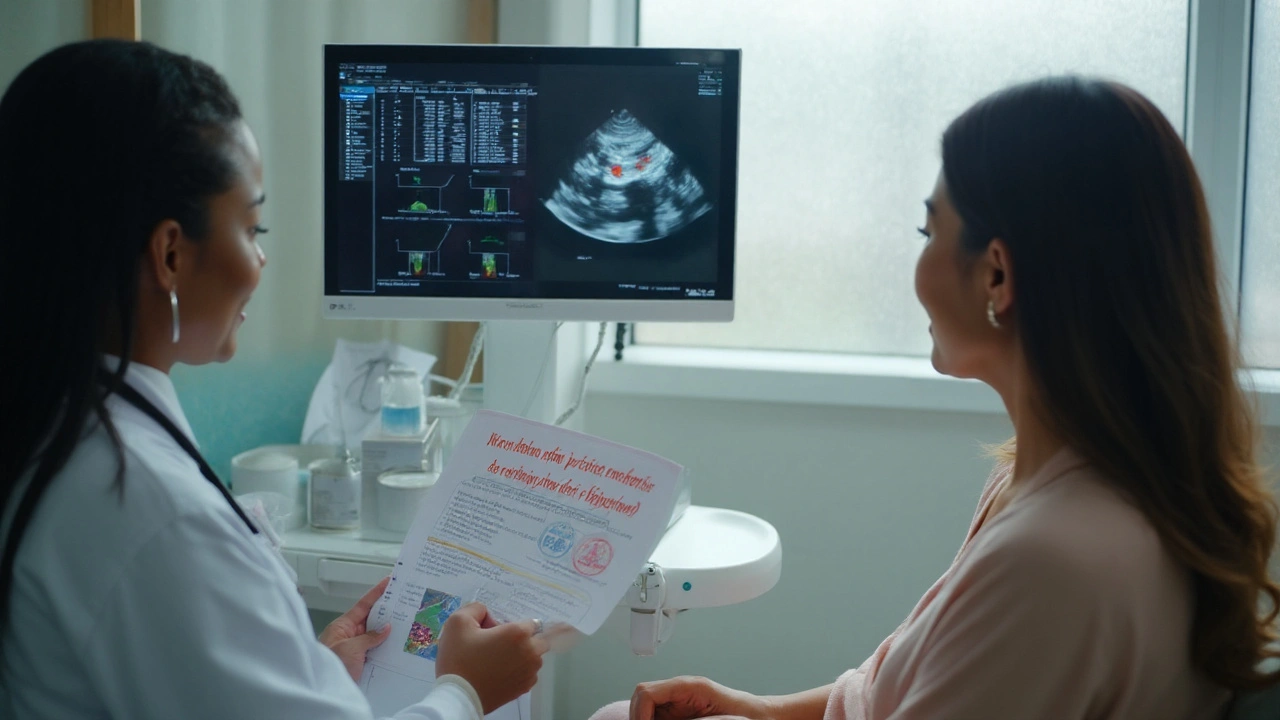
Managing earlier makes treatment gentler and outcomes better
Treatment aims are simple: reduce inflammation and pain, suppress endometrial-like tissue activity, preserve fertility, and keep life moving. Starting sooner usually means less aggressive measures do the job.
First-line medical options (evidence-backed):
- NSAIDs. Start at onset of cramping. If you need them most days, escalate therapy-don’t just keep swallowing tablets.
- Combined hormonal contraception (pill, patch, ring). Continuous use (skip the placebo week) can cut bleeding and flares.
- Progestin-only therapy. Dienogest 2 mg daily has good data for pain and lesion suppression. The levonorgestrel IUD reduces bleeding and helps pelvic pain for many.
Second-line or specialist options:
- GnRH antagonists (e.g., elagolix, relugolix, linzagolix in some regions). They reduce hormone stimulation quickly. Use “add‑back” therapy (low-dose estrogen/progestin) to protect bones and tame side effects.
- GnRH agonists (older class). Effective but more side effects; usually used when others fail or are not tolerated.
- Neuromodulators for chronic pain (amitriptyline, duloxetine, gabapentinoids) if there’s nerve sensitisation-paired with pain psychology and pelvic floor physio.
Surgery: when, why, and how to choose wisely
- Best for endometriomas causing pain, deep infiltrating disease (bowel/ureter/bladder involvement), or when medical therapy fails.
- Aim for conservative, nerve-sparing excision by an experienced endometriosis surgeon. One well-planned operation beats multiple “clean-ups.”
- For those trying to conceive, balance the benefit of removing endometriomas against the risk to ovarian reserve. Discuss AMH levels, antral follicle count, and alternative routes like IVF.
Fertility planning without panic
- If you’re under 35 and not trying now, symptom control may be enough. Revisit plans yearly.
- If you’re 35+ or have known endometriomas, consider an early chat with a fertility specialist-even if you’re not ready to try. Simple tests (AMH, AFC) help map options.
- If you plan surgery and kids are in the future, ask about egg or embryo freezing beforehand, particularly if there’s a chance of ovarian cyst removal.
Real-life supports that make medical care work better
- Pelvic floor physiotherapy. Many people with endometriosis have pelvic muscle guarding. Learning to relax and retrain those muscles reduces pain with sex and bowel movements.
- Targeted movement. Gentle strength work, walking, yoga, or swimming maintain function and ease flares. On bad days I’ve seen friends swap a long run for a short walk with the dog-still counts. (Bella, my beagle, has no complaints.)
- Digestive support. If bowel symptoms dominate, a dietitian-guided low FODMAP trial or fibre tweaks can help. Don’t chase extreme diets-aim for sustainable patterns.
- Sleep and stress. Flare days and bad nights feed each other. Simple routines-heat packs, breathing drills, consistent bedtimes-lower the volume on pain.
What early looks like in day-to-day terms
- You noticed period pain was getting sharper and showing up before bleeding, so you tracked it for two cycles.
- You booked a GP visit, got a focused ultrasound referral, and started continuous combined contraception while waiting.
- Three months later, pain is halved and you haven’t missed class. You and your clinician decide whether to stick, switch to a levonorgestrel IUD, or plan surgery if deep disease is confirmed and still causing trouble.
Common pitfalls to avoid:
- Waiting for a “perfect” diagnosis. You can start treatment on a clinical diagnosis.
- Staying on a failing plan for months. If no clear improvement after 3 months, change tactics.
- Multiple repeat ovarian surgeries. Each one can lower ovarian reserve; get a second opinion before repeat operations.
- Ignoring the pelvic floor. Muscle spasm can mimic or magnify endometriosis pain.
Appointment prep checklist (print or screenshot):
- Symptom diary (2-3 months) and pain scores
- Top 3 goals (e.g., reduce pain, preserve fertility, avoid surgery)
- Meds tried and side effects
- Questions: “What does success look like in 3 months?” “Plan B if not better?” “Do I need imaging now or later?”
Mini‑FAQ
Can treating early stop endometriosis from coming back? Recurrence is possible because hormones keep cycling, but early, consistent treatment lowers flare frequency and intensity. After well-done excision, ongoing hormonal suppression reduces recurrence risk, per ESHRE.
Is pregnancy a cure? No. Some symptoms settle during pregnancy; many return postpartum. Don’t feel pressured to conceive for symptom control.
My ultrasound was normal. Could I still have it? Yes. Ultrasound misses superficial disease. If your symptoms fit, you can be treated and/or get advanced imaging or specialist review.
Are there new tests in 2025? Researchers are studying blood, urine, and menstrual fluid biomarkers (including microRNAs), but none are ready to replace clinical judgment and imaging yet. Stick with guideline-backed pathways.
What about teenagers? Adolescents benefit from the same approach: recognise patterns, start safe suppression early, and avoid repeated, unnecessary surgeries. NICE and ESHRE support this.
Next steps and troubleshooting for different paths
- Teen with disabling cramps: Start with NSAIDs plus continuous combined pill or progestin; organise a gentle pelvic physio assessment; endometriosis-style ultrasound if no improvement after 3 months.
- Trying to conceive: Refer to fertility early; check AMH, AFC, and semen analysis; weigh surgery vs IVF based on imaging and age; avoid repeat ovarian surgery unless symptoms or imaging demand it.
- Post-surgery but pain persists: Consider pelvic floor dysfunction and central sensitisation; add physio and pain neuroscience education; trial neuromodulators; revisit hormonal suppression unless trying to conceive.
- IBS-like symptoms: Track cycle link; consider a short, dietitian-led low FODMAP trial; request MRI if deep bowel disease is suspected.
- Work or study pressure: Ask for flexible schedules or adjustments during flare days; small accommodations often keep you in the game.
Credibility snapshot (no links, so you can Google the titles): WHO endometriosis fact sheets (2021-2023); ESHRE Endometriosis Guideline (2022); NICE NG73 Endometriosis (2017, updated 2024); ACOG Practice Bulletin updates; EndoCost economic study; tertiary-centre surgical outcome series; recent reviews on GnRH antagonists and add‑back therapy.
If you remember one thing, make it this: the moment you suspect endometriosis is the moment to move. A symptom diary, a focused ultrasound, and a three-month treatment trial can stop years of drift. That is the quiet power of early detection.

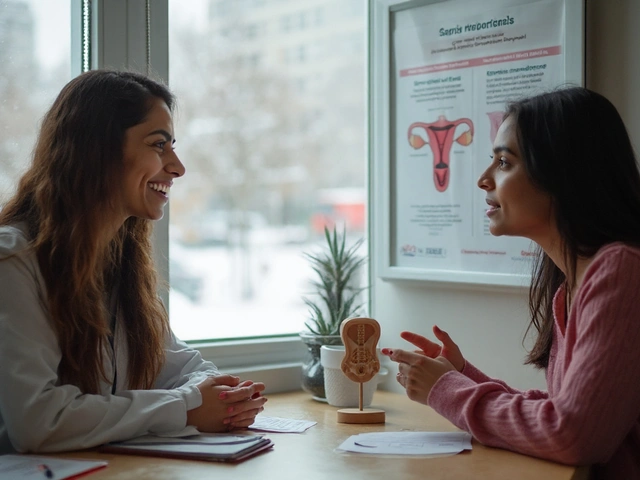
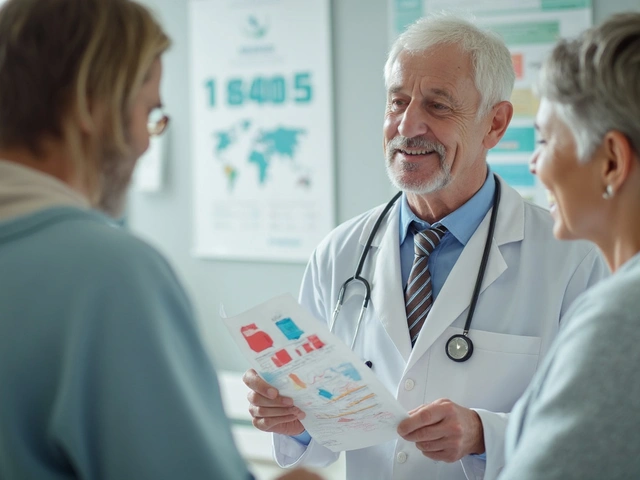
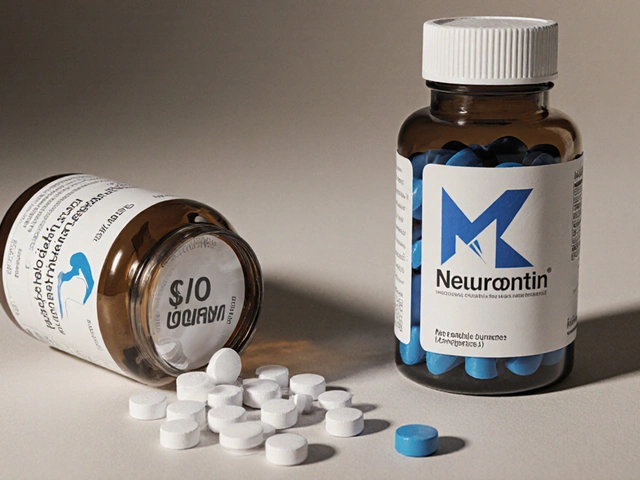
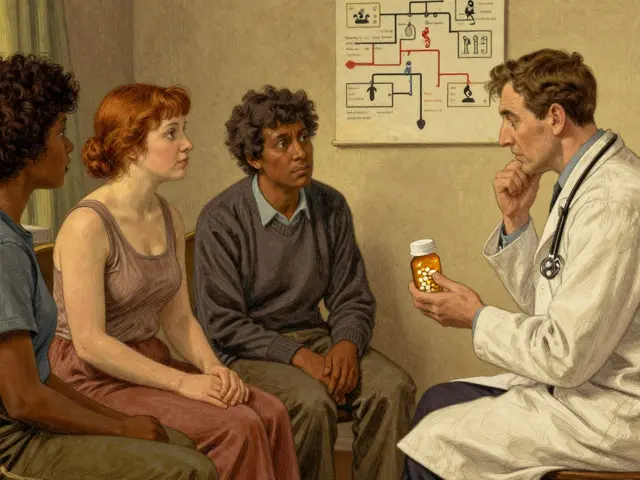
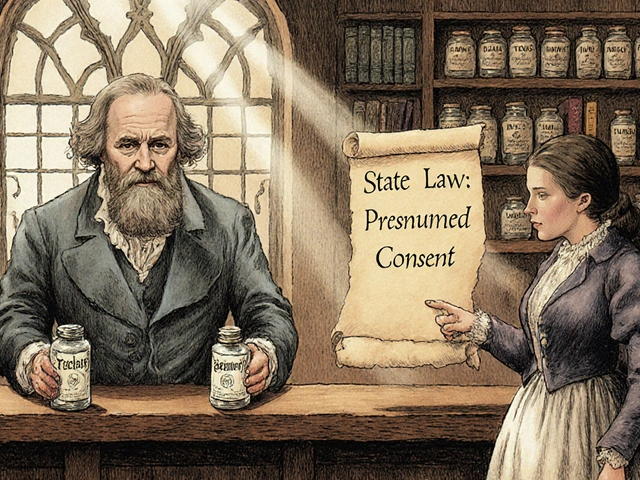

Anirban Banerjee
Early identification of endometriosis radically improves patient outcomes; by reducing the latency between symptom onset and a definitive management plan, clinicians can mitigate chronic pain, preserve fertility, and limit the need for extensive surgery. The article correctly emphasizes symptom clustering-severe dysmenorrhea, dyspareunia, and bowel‑bladder disturbances-as red flags that warrant prompt investigation. A structured diary covering two to three cycles affords both the patient and the practitioner quantifiable data, facilitating a focused pelvic examination and targeted imaging. Moreover, adopting a clinical diagnosis framework aligns with current ESHRE and NICE guidelines, allowing initiation of hormonal therapy without awaiting laparoscopy. I encourage healthcare providers to integrate these checklists into routine primary‑care consultations, thereby fostering an inclusive approach to a historically under‑diagnosed condition.
Mansi Mehra
The summary is clear and the key points are easy to follow. It stresses that severe period pain and pain during sex should not be ignored. Tracking symptoms for a few cycles helps doctors decide on the next steps. Early hormonal treatment can reduce the need for surgery later. Overall the article follows current guidelines well.
Jagdish Kumar
What a compelling reminder that the “not‑so‑rare” nature of endometriosis demands our full attention! The narrative weaves together clinical data and personal anecdotes, striking a balance between evidence and empathy. By spotlighting the alliance between patient‑recorded diaries and targeted ultrasound, the piece showcases a proactive pathway that feels both urgent and achievable. The dramatization of “years in limbo” resonates powerfully, yet the tone remains friendly, guiding the reader toward actionable steps without descending into alarmism. In short, a masterclass in turning complex medical guidance into an accessible roadmap for anyone navigating this hidden condition.
Aminat OT
i cant even imagine the pain u go through daily lol
Amanda Turnbo
While the article packs a wealth of data, it occasionally drifts into jargon that could alienate newcomers. A more straightforward presentation of the decision tree would serve as a better primer for patients scrambling for answers. The emphasis on hormonal suppression is spot on, yet the brief nod to surgical options feels under‑explored given the variability in disease severity. In practice, a balanced dialogue between medical and surgical teams yields the best outcomes-something the piece could highlight more prominently.
Jenn Zuccolo
One might view early detection as the philosophical fulcrum upon which the scales of suffering and relief tip. The article elegantly frames endometriosis not merely as a pathological entity but as a lived experience awaiting validation. By grounding clinical recommendations in patient narratives, it transcends pure protocol and invites a compassionate discourse. Let us, therefore, champion symptom awareness as a moral imperative, ensuring that each individual’s story informs timely, evidence‑based care.
Courtney The Explorer
From a systems‑biology perspective, the latency period-spanning 7‑10 years-represents a critical failure mode; early intervention, leveraging multimodal diagnostics-ultrasound, MRI, and symptom‑tracking algorithms-optimizes signal‑to‑noise ratios, thereby attenuating downstream inflammatory cascades, reducing surgical morbidity, and preserving reproductive potential.
Ashleigh Connell
Wow, this guide feels like a breath of fresh air for anyone feeling stuck in the endless pain loop. I love how it breaks down the checklist into bite‑size steps-track, talk, test, treat-making the whole journey feel doable. The reminder that “pain is not normal” hits home and gives me permission to push for the care I deserve. Thanks for turning a daunting medical maze into a clear road map!
Erin Knight
The piece admirably aggregates current guidelines, yet it glosses over the heterogeneity of study populations that underpin those recommendations. Meta‑analyses reveal variance in response rates to GnRH antagonists across ethnic cohorts, a nuance absent from the discussion. Furthermore, the cost‑effectiveness analysis could benefit from stratified modeling rather than a one‑size‑fits‑all approach. In essence, while the article is a solid primer, a deeper dive into demographic disparities would elevate its rigor.
Kavita Jadhav
It’s crucial to recognize that delayed diagnosis isn’t just a medical lag; it’s a profound injustice that erodes quality of life. I urge clinicians to adopt a zero‑tolerance stance toward dismissive attitudes and to proactively screen patients presenting with any of the red‑flag symptoms outlined. By championing assertive advocacy, we can dismantle the barriers that have long silenced those suffering in silence. Let’s commit to turning empathy into decisive action.
Tony Halstead
When we examine the cascade of events that follows an untreated onset of endometriosis, the narrative unfolds like a cautionary tale of missed opportunities and preventable morbidity. The first sentence of the article sets the stage by stating the average diagnostic delay of seven to ten years-a statistic that, upon reflection, is both alarming and a call to action for the entire medical community. From the perspective of an inclusive mentor, I see this delay as a collective failure, not merely an individual oversight, and I encourage us all to adopt a proactive screening mindset. By incorporating simple, structured symptom diaries into routine gynecologic visits, we empower patients to become co‑authors of their health story, thereby shortening the interval to diagnosis. Moreover, the emphasis on early hormonal therapy aligns with the principle that treating inflammation before it becomes entrenched can preserve ovarian reserve, which is pivotal for fertility aspirations. It is noteworthy that the article highlights the role of transvaginal ultrasound performed by skilled operators, a nuance that underscores the importance of specialized training in primary care settings. The recommendation to proceed to magnetic resonance imaging when deep infiltrating disease is suspected adds a layer of precision that can prevent unnecessary surgical exploration. Furthermore, the discussion of GnRH antagonists, paired with add‑back therapy, reflects an awareness of the delicate balance between efficacy and side‑effect profile, a balance that many clinicians overlook. Equally important is the article’s acknowledgment that laparoscopy is not a mandatory prerequisite for initiating treatment, a stance that respects patient autonomy and reduces procedural risks. The inclusion of multidisciplinary interventions-pelvic floor physiotherapy, dietary adjustments, and psychological support-broadens the therapeutic horizon beyond pharmaceuticals alone. In practice, this holistic approach translates to fewer emergency department visits, reduced absenteeism from work or school, and ultimately, a higher quality of life for patients. By presenting clear decision trees and checklists, the authors provide a practical toolkit that can be readily implemented in busy clinical environments. The emphasis on fertility planning-through early AMH testing and strategic referral to reproductive specialists-ensures that reproductive goals are not sidelined in the management plan. Additionally, the article wisely cautions against repeated ovarian surgeries, advocating instead for second‑opinion consultations to safeguard ovarian function. In summary, the manuscript synthesizes current guidelines with real‑world applicability, offering a roadmap that is both evidence‑based and compassionate. As mentors, we must champion these insights, disseminate them among our peers, and, most importantly, translate them into tangible changes in patient care.